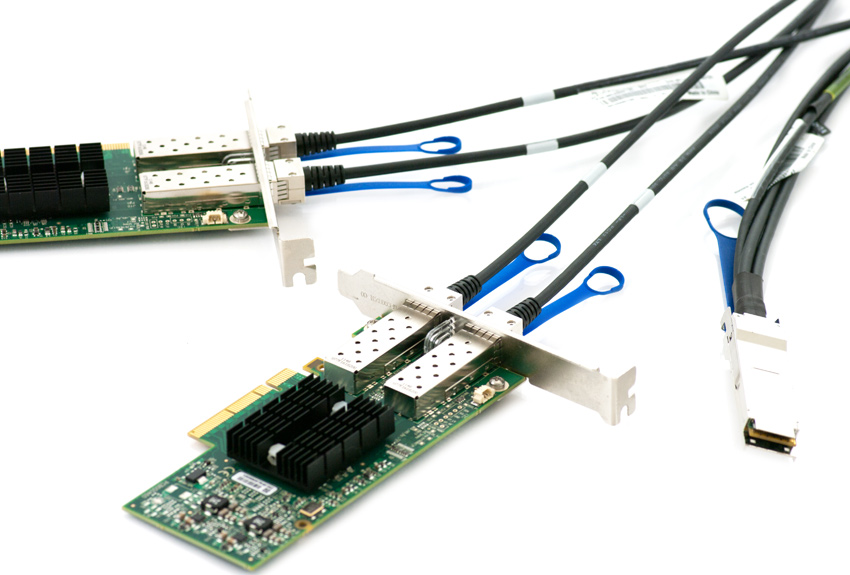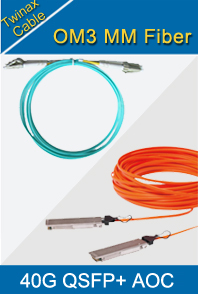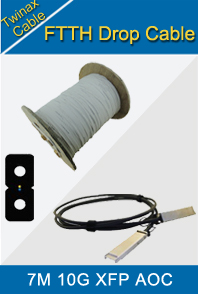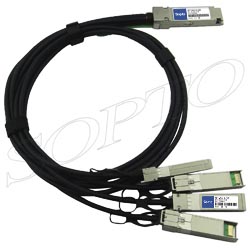-

- Sopto Home
-

- Special Topic
-

- Twinax Cable Knowledge
-

- Are We Moving from 10GbE Fiber to 10GbE Copper?
Twinax Cable Knowledge
- Cable Labeling as Part of Data Center Management
- How to Correctly Run cables On Servers in a Data Center?
- 4 Realities You Should Consider 10G Ethernet for Your Business
- Is it finally the end of copper?
- Why We Need Both 40G and 100G Ethernet Cable?
- What is Twisted Pair Cable?
- Benefits of Twisted Pair Cable Construction
- Why Copper Is Used in Cables?
- A Brief Look at Ethernet Cable Construction
SOPTO Special Topic
Certificate



Guarantee
Except products belongs to Bargain Shop section, all products are warranted by SOPTO only to purchasers for resale or for use in business or original equipment manufacturer, against defects in workmanship or materials under normal use (consumables, normal tear and wear excluded) for one year after date of purchase from SOPTO, unless otherwise stated...
Return Policies
Defective products will be accepted for exchange, at our discretion, within 14 days from receipt. Buyer might be requested to return the defective products to SOPTO for verification or authorized service location, as SOPTO designated, shipping costs prepaid. .....
Applications
 Twinax Cables are mainly used with PCI or PCI-E Card for the short distance interconnection in the server room.
Twinax Cables are mainly used with PCI or PCI-E Card for the short distance interconnection in the server room.
SOPTO Products
- Fiber Optic Transceiver Module
- High Speed Cable
- Fiber Optical Cable
- Fiber Optical Patch Cords
- Splitter CWDM DWDM
- PON Solution
- FTTH Box ODF Closure
- PCI-E Network Card
- Network Cables
- Fiber Optical Adapter
- Fiber Optical Attenuator
- Fiber Media Converter
- PDH Multiplexers
- Protocol Converter
- Digital Video Multiplexer
- Fiber Optical Tools
- Compatible
Related Products
Performance Feature
Stable Transmission Speed
Reliable Transmission
Various Length Selection
Wider Operating Temperature
Good for HPC
Good for Data Center
Twinax Cable Knowledge
Recommended


Are We Moving from 10GbE Fiber to 10GbE Copper?
There are two major applications that require 10GbE (10 Gigabit Ethernet) speeds – Backbone network connectivity, mainly from the core switch to the distribution switches and the connectivity between distribution switches to the edge switches, as well. The second application is a virtualized data center. With server virtualization becoming more popular, increasing number of applications is being packed into powerful servers that require a higher bandwidth (10GbE) connectivity for their switches.

Majority of the 10GbE connections are (were?) fiber-based and optical fiber cables proved to be the perfect carrier for so much bandwidth. But, every 10GbE fiber connection comes with its own cost (and complexity). One needs specialized fiber ports in the network switch, fiber transceivers, fiber patch cords, fiber patch panels, etc.
There are some limitations to the installation of fiber cables (limited bend radius, etc) and they might need extra protection in the form of HDPE pipes, etc. OFC cables can’t just be crimped and plugged into the switches as each core needs to be spliced using a specialized equipment and requires specially trained manpower for the job. One also needs specialized equipment like OTDR to check fiber connectivity. The maintenance of fiber networks is similarly complicated (and somewhat expensive).
Of course, all this would not take away the credit from fiber cables for being the most reliable medium to carry high-bandwidth traffic over long distances. Have a look at the full list of advantages and limitations of optical fiber cables, if you are interested.
Copper is already the dominant carrier (medium) for 100 Mbps and 1GbE connections (except for connections of more than 100 meters, which is its inherent limitation). 10GbE copper connections have been in existence for a few years now, but they have not been very popular. Did you know that even Cat 5E & Cat 6 cables can carry 10GbE traffic? They can, but if these cables are used, 10 GbE traffic cannot be carried even up to 100 meters. Their range is reduced greatly (which can vary based on your infrastructure).
However, Cat 6A and Cat 7 cables can carry 10GbE data over the full 100 meters. These two types of cables are highly recommended for 10GbE connectivity, not only for the higher distance supported, but also for other quality-factors.
Network switches with 10GbE copper ports have also been in existence for a few years now, but they have not been very popular (at least when compared to fiber switches). But, with applications like HPC, Data Center, Server Virtualization, etc. demanding high-bandwidth connectivity over shorter distances, 10GbE edge-connections have been increasing in popularity.
10GbE copper connections are mostly plug-and-play. Copper cables come with the familiar RJ-45 interface and they just need to be plugged into the switch ports supporting 10GbE. More importantly, copper ports and cables are backward compatible. A 10GbE connection can also work with 1GbE/100 Mbps devices without requiring any expensive hardware replacements (unlike OFC solution that requires the changing of fiber transceivers). It’s also easier to replace older copper cables with newer copper cables, where ever required.
Many servers/storage devices (for enterprises) support 10GbE copper interface ports. There are network switches that support all-10GbE copper connections, even for SMB. The biggest catch is: A copper 10GbE connectivity/solution is (can be) less expensive to install and maintain (when compared with fiber). The reliability of copper 10GbE interface has also increased over a period of time. But 10GbE copper solution consumes more power, which increases the running cost to an extent.
Considering the advantages of copper 10GbE connections, are we moving from 10GbE fiber to 10GbE copper, for most 10GbE network connections that are less than 100 meters?
For more info, please browse our website. For our twinax cable or fiber optic cables’ newest quotes, please contact a Sopto representative by calling 86-755-36946668, or by sending an email to info@sopto.com.



